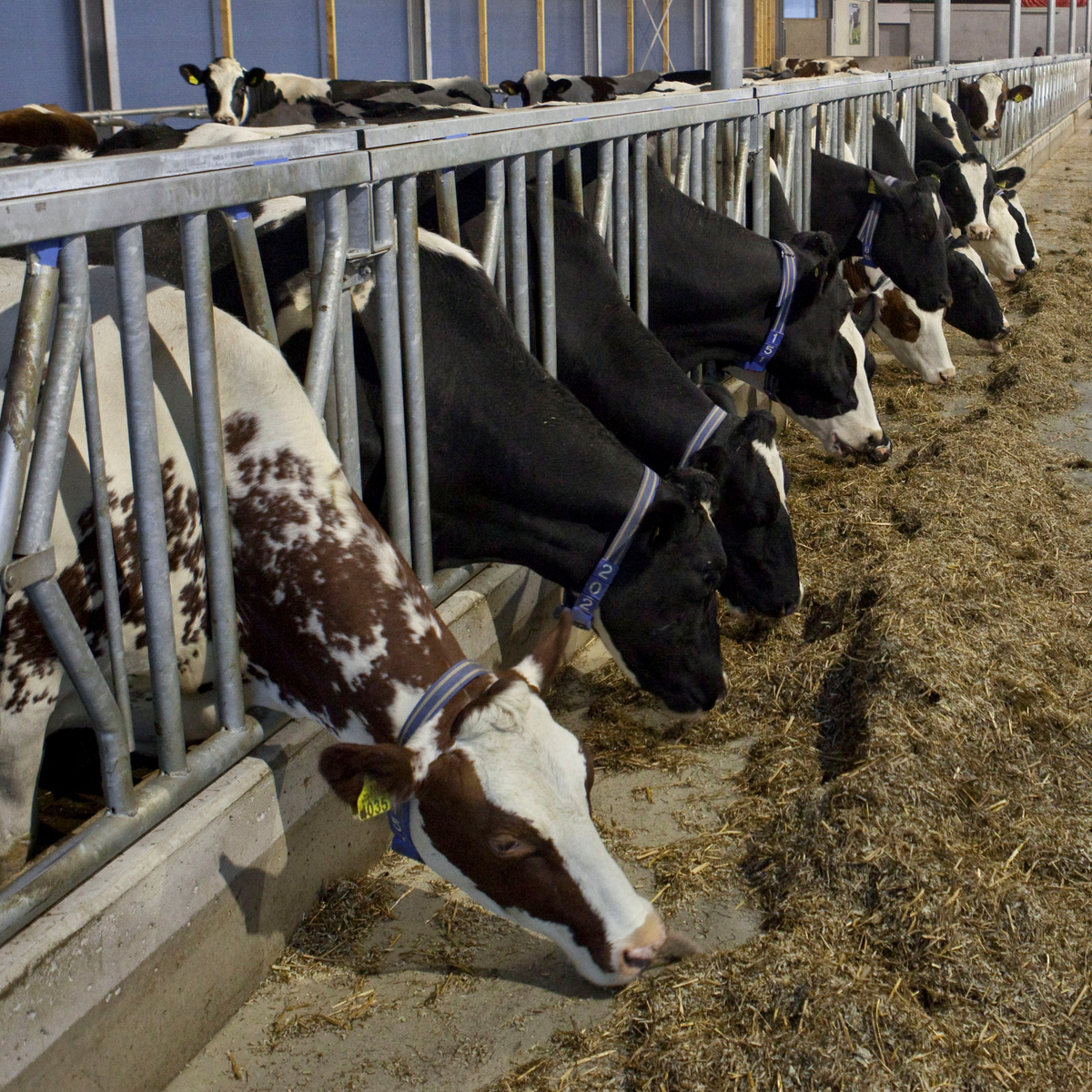Use of live yeast in animal diets: What do we know?

Much research has been carried out about the use of live yeast in animal production. For each animal species, effects can differ. What is the state of research for several animal species? All About Feed dives into the modes of action for cattle, horses, pigs and companion animals.
By C Jamie Newbold, Kirsty Dougal and Eric Pinloche, Institute of Biological, Environmental and Rural Science, Aberystwyth University, Aberystwyth, Ceredigion, UK
As noted elsewhere in this issue, the use of live yeast in animal feeds has a long history, here an attempt is made to outline recent publications regarding usage in common animal species and to explore the extent to which recent advances in our ability to identify and quantify changes in the intestinal microbiome is helping to understand the appropriate usage and mode of action of these products.
Ruminant nutrition
Ruminants represent perhaps the best-developed market for live yeast usage. Available products vary widely in both the strain of Saccharomyces cerevisiae used and the number and viability of yeast cells present. Not all strains of the yeast are capable of stimulating digestion in the rumen.
Certain strains of S. cerevisiae can help prevent the decrease in rumen pH associated with feeding a cereal based diet and this appears to be associated with a decrease in rumen lactate concentrations. Acute rumen acidosis occurs when a ruminant ingests a large quantity of rapidly fermented carbohydrates. The microbial changes in the rumen associated with such an event have been visualised as a spiral in which the availability of rapidly fermentable carbohydrate results in the production of volatile fatty acids by a wide range of rumen micro-organisms with an associated drop in rumen pH, thereafter, in some case, an overgrowth of Streptococcus bovis, facilitated by this organisms ability to uncouple growth from carbohydrate fermentation leads to the rapid accumulation of lactic acid and a further drop in pH. As the pH declines lactobacilli start to predominate leading to a further accumulation of lactic acid and a yet further drop in rumen pH.
However, whilst acute acidosis can, and in cases does, lead to death due to associated metabolic acidosis, sub-acute ruminal acidosis (SARA), also known as chronic or sub-clinical acidosis, is perhaps a more common, well-recognised digestive disorder that is an increasing health problem in most dairy herds. SARA is a disorder of ruminal fermentation that is characterised by extended periods of depressed ruminal pH below 5.5–5.6. As before, this drop in ruminal pH is a result of the breakdown of dietary carbohydrates particularly from cereal grains leading to the production of volatile fatty acids and lactic acid but unlike acute acidosis the rumen pH does not spiral below pH 5 and indeed may recover to above pH 6 latter in the feeding cycle.
Thus cattle experiencing SARA often do not exhibit any clear overt clinical symptoms with the most common clinical sign associated with SARA a reduced or erratic feed intake.
Recently we have used 16S rRNA to characterise the change in the bacterial population within the rumen of cattle fed an acidogenic diet supplemented with live yeast. Cannulated lactating cows received a daily ration of corn silage and concentrates plus (0, 0.5 or 5g/d) yeast. Samples from the liquid, solid and solid plus liquid phase of the rumen were collected for DNA extraction. The variation in the bacterial community between treatments was assessed by using Terminal Restriction Fragment Length Polymorphism (tRFLP) based on the 16S rRNA gene. There were clear differences between samples taken from the liquid phase of the rumen and those taken from the solids, confirming previous observations that a unique microbial population is attached to feed material in the rumen. It was also obvious that a unique and different bacterial population had developed in the rumen of the animals receiving either 0.5 or 5 g/d yeast.
We thus further characterise what these differences might be. Recent advances in massively-parallel pyrosequencing have opened up the possibility of sequencing a segment of the 16S rRNA genes from all the bacteria within a sample. Sequence identification, assignment to bacterial phylogenies based on 16S rRNA sequences available in online databases found that Firmicutes accounting for 50% to 60% of the recovered sequences (depending of the treatment), Bacteroidetes (34% to 40%), Proteobacteria (1.2% to 2%), Actinobacteria (0.4% to 1.2%) and Fibrobacteres (0.6% to 1.5%) with 8 minor Phylum (<0.5%). The relative occurrence of Bacteroidetes and Proteobacteria decreased in yeast fed animals; whilst Firmicutes, Fibrobacteres and Actinobacteria increased. When bacteria were classified in functional groupings based on known metabolic activity. A significant decrease in the taxa representing starch consuming bacteria (Ruminobacter), proteolytic bacteria (Prevotella) and an increase in the taxa representing both fibrolytic bacteria (Fibrobacter, Ruminococcus, Eubacterium) and lactic acid utilising bacteria (Megasphaera and Selenomonas) was observed in yeast fed animals.
It appears that in ruminants live cultures of S. cerevisiae can help prevent a post-feeding drop in rumen pH in animals fed concentrate diets thus reducing the likelihood of both clinical and sub clinical acidosis, this appear to be due to the ability of the yeast to selectively stimulate the growth of lactate utilising Megaspharera and Selenomonas in the rumen.
Equine nutrition
Live yeast products have also been added to equine diets. Initial studies focused on the effects of yeast supplementation on fibre digestion with small but statistically significant increases being reported. However more recently studies have focused on the ability of yeast to prevent digestive upsets. Horses are extremely susceptible to gastrointestinal disturbance when subjected to sudden changes in diet which can result in alteration of fermentation patterns and ultimately metabolic disorder.
Colic and laminitis commonly occur with colic being the biggest cause of mortality in the horse. The prevalence of laminitis in the UK is poorly documented but between 0.5 and 3% of the equid population has been reported as suffering from the condition. When horses are challenged by the sudden incorporation of high levels of soluble carbohydrate in the diet (e.g. starch from grain or fructans from pasture) normal enzymatic breakdown in the small intestine is overloaded and large amounts of readily fermentable starch/sugar pass to the large intestine where microbial fermentation occurs. Rapid fermentation occurs with a rapid accumulation of lactic acid producing bacteria such as Lactobacilli and Streptococci occurring within hours during laminitis and some types of colic. High amounts of lactic acid and gas are produced causing a rapid drop in hindgut pH and death/suppression of the normal fibre degrading bacteria. These events are thought to contribute to impaction colic due to excess gas accumulation combined with dehydration of digesta and laminitis due to endotoxin release when gram negative bacteria lyse and amine production by the suddenly abundant lactate producing bacteria.
In 2002, Medina and others reported that lactic acid levels were lower and caecal pH higher in horses fed a high starch diet supplemented with live yeast. While Hale and Hemmings, 2013, have suggested that yeast supplementation slows starch fermentation in the gut of horses susceptible to digestive upset. Detailed studies on the microbiome of the equine gut are just starting to appear, e.g. Dougal and others in 2012, and as yet no detailed pyrosequencing studies on the effect of yeast supplementation on the intestinal microbiome have been published. However, Brown and others, have this year presented real time PCR based data suggesting that numbers of carbohydrate fermenting lactic acid producing bacteria in faeces decreased when yeast was added to the diet of horses challenged with high concentrate diets.
Porcine nutrition
Live yeast products have also been used in pig nutrition, however the mechanism of action seems to differ from that reported above for equids and ruminants. Studies have focused on immunostimulation (in the sow or piglet) and pathogen prevention rather than on performance. Recent studies have demonstrated increases in immunoglobulins in sow milk and reduced diarrhoea in the piglets and reduced weaning to oestrus intervals in sows.
Pathogen challenge trials have demonstrated binding of E. coli to yeast cell walls, reducing diarrhoea in piglets following E. coli challenge and a reduced mortality following endotoxin challenge. Only limited studies have investigated performance responses and although detailed studies on the porcine gut microbiome have been reported, studies investigating the effect of live yeast appear to date to have used only relatively low resolution approaches.
Companion animal nutrition
Studies on the effects of live yeast in companion animals (cats and dogs) are in their infancy. A number of studies have been published on yeast as a source of active compounds rather than the live yeast activity itself (mannan, glucans, proteins, nucleotides) or yeast cell walls. In 2013, Beloshapka and others, used 454 pyrosequencing to investigate the effect of yeast cell walls on the intestinal microbiome of dogs and we have recently completed a study to investigate the effect of live yeast on the intestinal microbiome of cats fed a high fibre diet.
Changing bacterial populations
In conclusion, the use of modern molecular techniques has shown that yeast not only stimulates bacterial activity in the gut of animals but also change the composition of the bacterial population. We believe that such techniques will accelerate efforts to help understand where and when live yeast probiotics can be used to improve animal health and productivity.
References available on request.











